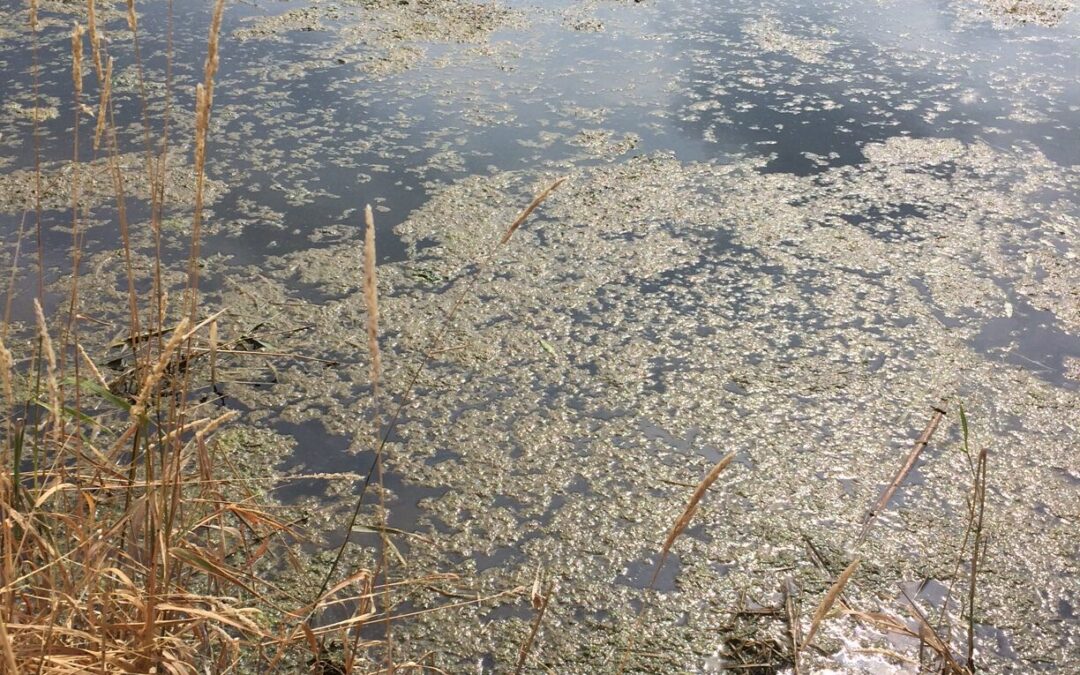Stagnant water can pose numerous challenges for both us and the environment. When we refer to stagnant water, we’re talking about water that remains stationary for an extended duration. Over time, still water becomes an ideal environment for the proliferation of detrimental bacteria, unpleasant odors, algal overgrowth, and other water quality concerns.
Here, Healthy Ponds provides insight into the concept of stagnant water, its impacts on lakes and ponds, and measures you can take to prevent its occurrence.
Defining Stagnant Water
Stagnant water, commonly referred to as “standing water,” remains undisturbed for extended periods. The absence of movement or aeration in stagnant water creates an ideal environment for the formation of biofilms, which consist of a collection of bacteria or fungi.
When water stagnates, its oxygen levels begin to decrease, rendering it anaerobic, meaning devoid of oxygen. This oxygen depletion renders the water incapable of sustaining life. Once water becomes stagnant, bacteria swiftly begin to proliferate on its surface. These microorganisms pose a potential threat to both humans and animals due to their ability to generate harmful toxins.
Its Effects on Lakes and Ponds
Unsafe to Ingest
In a stagnant lake, the presence of more than just algae can be observed. Harmful bacteria are also found in the stagnant water.
These bacteria have the potential to render the water unfit for consumption. Pets, livestock, and wildlife may fall ill if they ingest it. The bacteria can contaminate the surrounding soil and groundwater in the vicinity of the lake.
Introduces a Strong and Unpleasant Odour
When water in a lake or pond experiences stagnation, it emits an unpleasant odor. This undesirable scent results from a decrease in dissolved oxygen levels in stagnant water, leading to the anaerobic decomposition of organic materials such as deceased fish and plants. This decomposition produces a distinctive “rotten egg” smell.
It’s worth noting that hydrogen sulfide gas, responsible for this odor, not only creates a foul smell but can also be toxic. Therefore, the problem with stagnant water bodies extends beyond the unpleasant odor.
May Cause Wildlife Death
Most fish inhabit freshwater environments. When a lake’s water becomes stagnant, it leads to a decline in oxygen levels within the lake, making it inhospitable for fish survival.
The consequences of fish mortality extend beyond the aquatic realm, affecting other animals in the vicinity. For instance, the demise of fish in a lake can set off a domino effect within the ecosystem’s food web.
Preventing Stagnant Water Formation: How To
Numerous methods are available to proactively avoid or treat the formation of stagnant water. Below are a few methods to follow:
- Keep your pond clean through aeration and all-natural stagnant pond treatment.
- Avoid using pesticides and fertilizers near your pond.
- Avoid dumping grass clippings, compost, and leaves in the pond.
Ask Healthy Ponds About Stagnant Pond Treatment Products Today!
Healthy Ponds provides all-natural solutions to keep your pond looking clean and healthy. Browse our stagnant pond treatment products online today or ask our team for more information!


